|
Swinstead
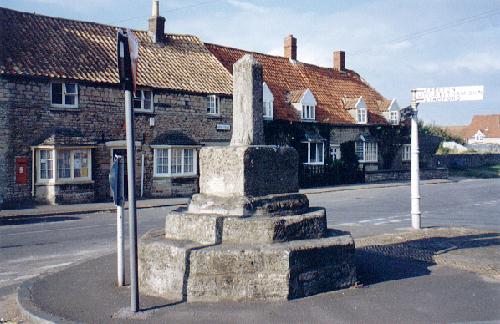
The market cross in the
centre of Swinstead
The grey stone cottages of Swinstead line the byways between the River Glen and the wooded slopes of Grimsthorpe Park, five miles west of Bourne. The village was known as
Suinham in the Domesday Book of 1086 but by 1150 this had changed to Swinsteda, from the Old English meaning "the homestead where swine or pigs are reared".
An old stone market cross on high steps stands in the middle of the village and although the date is unknown, it bears a resemblance to one that can be found in the market place at nearby Corby Glen that was erected in the reign of Edward III (1312-1377), although Swinstead's is less elaborate. This was the focal point of the village in times past, where visiting monks and priests preached the word of God, where the annual fairs were held and where proclamations of important local and national events were made. It was also the spot where villagers gathered to meet and to talk and discuss the momentous events that affected their lives because they realised, as we do today, that there is a security in being with your neighbours in times if crisis and an unspoken fellowship when there is cause for celebration.
The Ereseby family, whose descendants still live at Grimsthorpe Castle, have stamped their mark on the community since they took possession of the house when it was granted to them by Henry VIII in 1516.Many cottages in the village bear evidence of their ownership with stone plaques built into the front showing the letter A surmounted by a crown. Their patronage is particularly evident in the elaborate memorials that can be found in St Mary's Church, one of the best maintained churches in the Bourne area where so many others are struggling against rising costs and flagging congregations. It has its own private car park near the main gate while the church itself is clean and tidy and a joy to visit and, as an added bonus, it is usually open during the day. Those who run its affairs have decreed that no plastic flowers are allowed in the churchyard but not all modern practices are shunned because we are also informed that the parochial church council can be contacted on the Internet.
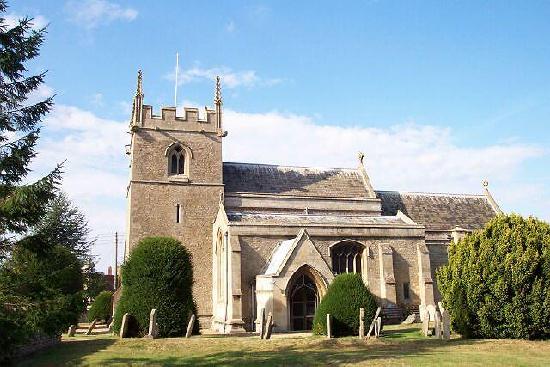
St Mary's Church is memorable for the hideous gargoyles looking out from its low 600-year-old tower while neatly clipped yew trees adorn the churchyard. The north arcade of three bays dates from 1200 and under the tower is a 700-year-old stone figure of a cross-legged knight while in the chancel is a large marble monument from 1809 to the fifth and last Duke of Ancaster, depicted kneeling by the tomb of his two wives. The small single manual organ in the church dates back to the early 19th century and is in perfect condition. The maker's plate on the front announces that it was built by Henry Bryceson and Son, Organ Builders Est 1796, Brook Street,
Euston Road, London NW.
Another
instrument of interest is the church clock, installed in 1897 to mark Queen
Victoria's diamond jubilee at a cost of £79 13s. 5d and a framed list of those
who contributed hangs nearby. More than a century later, sufficient money was
raised to refurbish the timepiece and add an electrical movement to replace the
winding mechanism that had tired out so many members of the parochial church
council in years past. The work was carried out by the Scunthorpe horologist
John Abbott at a cost of £5,500 to mark Queen Elizabeth's golden jubilee and
was dedicated at a special ceremony on 28th July 2002 conducted by the vicar,
the Rev Andrew Hawes. As in the previous ceremony more than a century ago, a
plaque has been mounted on the wall giving the names of those who contributed
towards the cost.
Among the family memorials is a gothic monument on the wall of the chancel by J Forsyth in 1883 in memory of one of the distinguished female members and erected according to the directions contained in the will of Elizabeth, Countess of Clare, in loving memory of her mother. It is an ornate affair made of stone with elaborate canopies and small white marble statuettes on short red marble shafts and her coloured coat of arms in the centre. The inscription reads: "Here lies the mortal remains of Priscilla Barbara Elizabeth Bertie, Baroness Willoughby de Eresby, in her own right, and joint hereditary Great Chamberlain of England. Elder daughter of Peregrine, 3rd Duke of Ancaster and Kesteven, sister and senior co-heir of Robert 4th Duke of Ancaster and Kesteven. Born 16th February 1761. Married 23rd February 1779 to Peter Burrell Esquire, afterwards 1st Lord Gwydir.
Died 29th December 1828."
|
SWINSTEAD IN PAST TIMES |
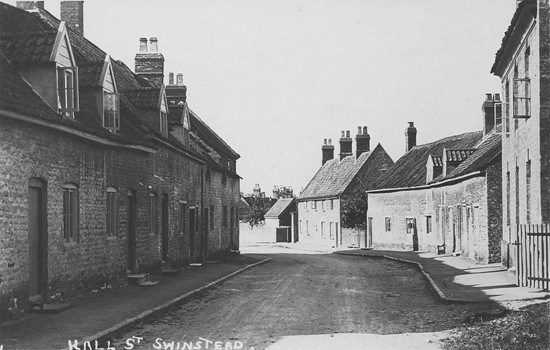 |
|
A postcard view of Hall Street taken circa 1910. |
|
A view of the village cross at Swinstead
taken from a picture postcard which was posted in 1910. Villagers
are making the most of the occasion by posing for the photographer
while having a chat. |
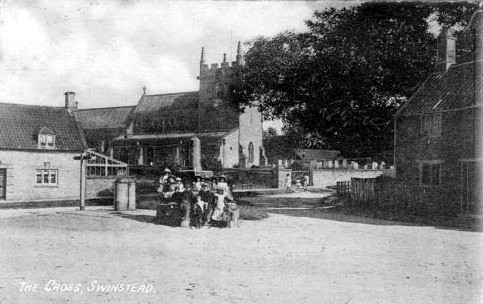 |
|
|
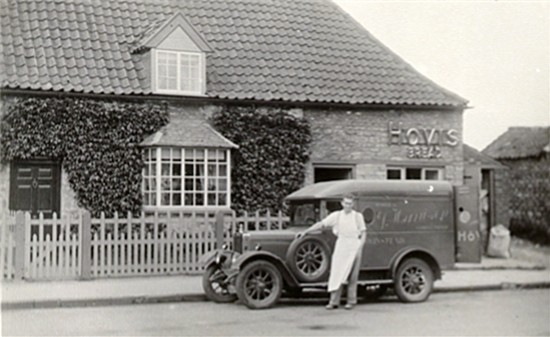 |
|
The Harrison family were bakers in the village for
three generations, from circa 1871 onwards, and these pictures date from
1930. Proud owner of the van
(above) is John (Jack) Harrison, born 1894. The bakery later became the
village shop and then a private house. Behind the low front wall of the
house is the remains of a millstone.
The handcart picture (below) shows the old blacksmith's shop in the
background. |
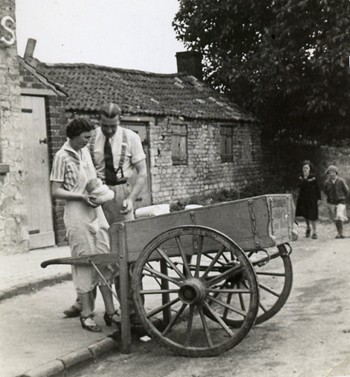 |
|
FROM THE ARCHIVES
There seems to be a great neglect on the part of
some in this parish [Swinstead] in the matter of a bridge which has been
erected for some time but remains in a very unfinished and dangerous
state. Those whose duty it is to attend to this would do well to look to
the affair and not longer jeopardise the lives and limbs of their fellow
creatures, for it must give rise to serious consequences unless
corrected before the dark nights of winter. - news report from the
Stamford Mercury, Friday 6th June 1845.
By the death of Charles Christian, late of the
Windmill Inn, Swinstead, near Bourne, his widow is left entirely
destitute with nine children and expecting her confinement. The vicar
and principal inhabitants of the parish consider her to be an active,
industrious and thoroughly respectable person, and are anxious to raise
such a sum as will enable her to continue her late husband's business.
Subscriptions will be thankfully received by the Rev J D Giles, Vicar of
Swinstead, Mr Henry Whincup, Stamford, and Messrs Peacock, Handleys and
Peacock, bankers, Bourne.
There followed a list of subscriptions in various sums, the largest
being £20 from Lord Willoughby de Eresby and £10 each from Lady
Willoughby, G J Heathcote M P. and William Parker, while other donations
were of £2, £1 and even 5s., a total of £130 which would be £14,000 at
today's values. - news report from the Stamford Mercury, Friday 9th
February 1849.
In our
journal a few weeks since, we announced the marriage of the Rev Edward
Chapman, Vicar of Swinstead, to Miss Worsley. During their absence on
their wedding tour, the inhabitants of that village unanimously resolved
to present to their clergyman a tribute of their love and respect; and a
very elegantly chased silver tea kettle and lamp was the result of their
contributions. This unexpected demonstration of kindness on the part of
the parishioners of Swinstead could not prove otherwise than highly
gratifying to Mr Chapman. - news report from the Lincoln, Rutland and
Stamford Mercury, Friday 3rd July 1857. |
|
PHOTO ALBUM |
|
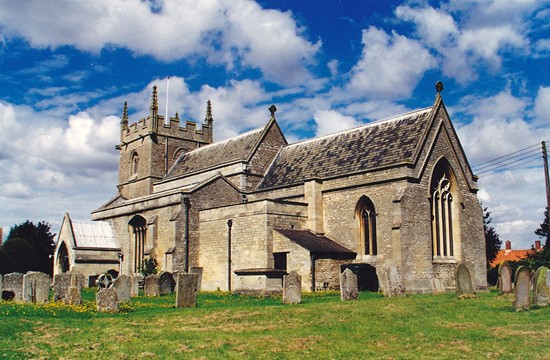 |
|
St Mary's Church. |
|
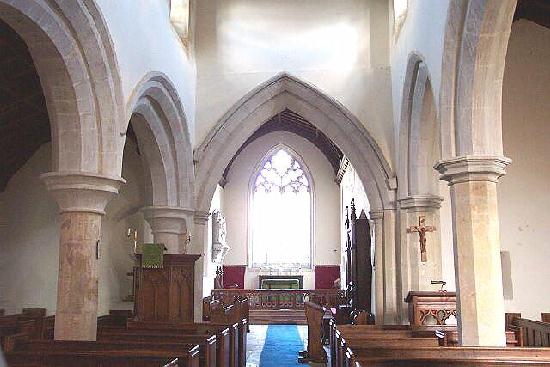 |
|
The nave of St Mary's Church. |
|
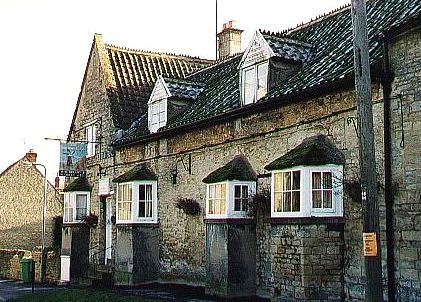 |
|
The village pub at Swinstead is the Windmill Inn
which dates from the 17th century although there may have been an alehouse on this site for many years before that. During the 19th century, this was the venue for the audit dinner when tenants of the Grimsthorpe Estate were summoned to pay their rents and dine on winged game and venison from the park. |
REVISED JANUARY 2015

Go to:
Main Index Villages
Index
|








